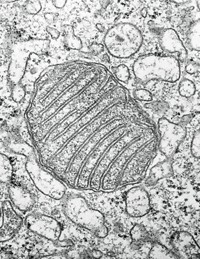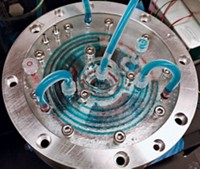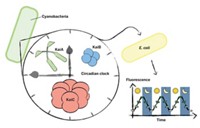Advertisement
Grab your lab coat. Let's get started
Welcome!
Welcome!
Create an account below to get 6 C&EN articles per month, receive newsletters and more - all free.
It seems this is your first time logging in online. Please enter the following information to continue.
As an ACS member you automatically get access to this site. All we need is few more details to create your reading experience.
Not you? Sign in with a different account.
Not you? Sign in with a different account.
ERROR 1
ERROR 1
ERROR 2
ERROR 2
ERROR 2
ERROR 2
ERROR 2
Password and Confirm password must match.
If you have an ACS member number, please enter it here so we can link this account to your membership. (optional)
ERROR 2
ACS values your privacy. By submitting your information, you are gaining access to C&EN and subscribing to our weekly newsletter. We use the information you provide to make your reading experience better, and we will never sell your data to third party members.
Biological Chemistry
Bugs in Space
ACS NEWS: Studies with E. coli will probe the effects of space travel on gene expression
by CELIA HENRY
April 11, 2005
| A version of this story appeared in
Volume 83, Issue 15

A recurring skit on tv's "the Muppet Show" featured Miss Piggy as an astronaut in "Pigs in Space." Well, if the National Aeronautics & Space Administration were writing the script now, it would be "Bugs in Space"--not the kind with six legs and wings, but bacteria. Preparations are under way for the December launch of a "nanosatellite" (NASA-speak for a satellite weighing less than 10 kg) carrying an experiment to determine the effects of space travel on gene expression in the bacterium Escherichia coli.
The long-term goal of such genetics experiments is the development of therapies to counter the effects of space travel on the human body. This goal becomes increasingly important as NASA makes human exploration of the moon and solar system a priority. The information could also be used to discover and develop therapies for related disorders, such as osteoporosis or muscle atrophy, back on Earth.
For the first experiment, the scientific team, including people from NASA and Stanford University, will be looking at the effects of space travel on the expression of the E. coli gene called phoP, which responds to extracellular magnesium. The test organisms will be genetically engineered bacteria containing instructions for expression of a fusion protein consisting of the phoP protein and green fluorescent protein.
The main purpose of this experiment is "showcasing the technology," said Antonio J. Ricco, director of the National Center for Space Biological Technologies at Stanford and chief technologist for the Astrobionics Program at NASA's Ames Research Center in California's Silicon Valley. He described the mission last month at a Division of Analytical Chemistry symposium at the American Chemical Society national meeting in San Diego. Other team members include John W. Hines, the project manager at NASA Ames.
The satellite, which is called GeneSat-1, was designed with the "unusual and challenging" constraints of the mission in mind, Ricco said. The scientific portion of the satellite is limited to 2 kg and 2 W of power. Therefore, the team needed to come up with low-power methods for doing everything on the satellite. The heart of the system is a microfluidic card with wells for samples. The system's pump consists simply of a medical-grade plastic bag and a helical spring that can be set for pressures between 0.5 and 4 psi.
The system will basically run itself once the satellite has been launched and released, starting the experiment when predetermined conditions are reached.
"If the sensors after some number of hours or days are saying that the temperature and the gravity aren't stable enough, we'll start the experiment anyway," Ricco told C&EN. "We don't want it to orbit for six months or a year and never do the biology experiment."
After the experiment is loaded onto the rocket, no power supply will be available for about five days. Therefore, the researchers needed an organism that could survive over a fairly long period at variable ambient temperature. E. coli, which can survive from about 4 to 37 °C, fits the bill.
The researchers will put the bacteria into a state of suspended animation by keeping them in a saline buffer and depriving them of nutrients. When the satellite reaches its orbit around Earth and has achieved a steady temperature and gravity (less than 0.1% of that at Earth's surface), the temperature will be raised to the final growth temperature, and the bacteria will be "awakened" by the addition of glucose.
Two different optical measurements will be used to monitor the bacteria. The fluorescence from the green fluorescent protein reveals the expression levels of the phoP gene. The optical density, measured from the light scattered by the bacteria, gives a measure of the overall bacterial population.
"There's plenty of signal up there," Ricco told C&EN. "The question is where on the growth curve will we start to be able to detect the green fluorescent protein." In dilution measurements, they've been able to detect fluorescence from slightly more than 107 bacteria per mL.
Just to make sure that unforeseen difficulties with the biology don't derail tests of the hardware, a couple of wells in the microfluidic device will contain pieces of glass with well-characterized fluorescence to serve as a standard. "If something goes wrong with the biology and we don't know why, that would be a significant problem," Ricco said. "If it doesn't work and we learn that it's because of some unpredicted temperature excursion, then nobody did anything wrong. You just learn from it, and next time you do whatever you need to do to keep the biology viable."
Assuming that all goes well in December, Ricco and his collaborators will start looking at more complex organisms such as fruit fly larvae or worms. Mammalian cells are more difficult to resuscitate once they're in space, Ricco said. "We're working on protocols where we think we can achieve that in some robust cell lines," he said. By moving to mammalian cells, they may be able to study genes whose regulation could help humans adapt to space. "We want to target our very fundamental studies at this much more applied goal of how we can make space a safer environment for human exploration."






Join the conversation
Contact the reporter
Submit a Letter to the Editor for publication
Engage with us on Twitter